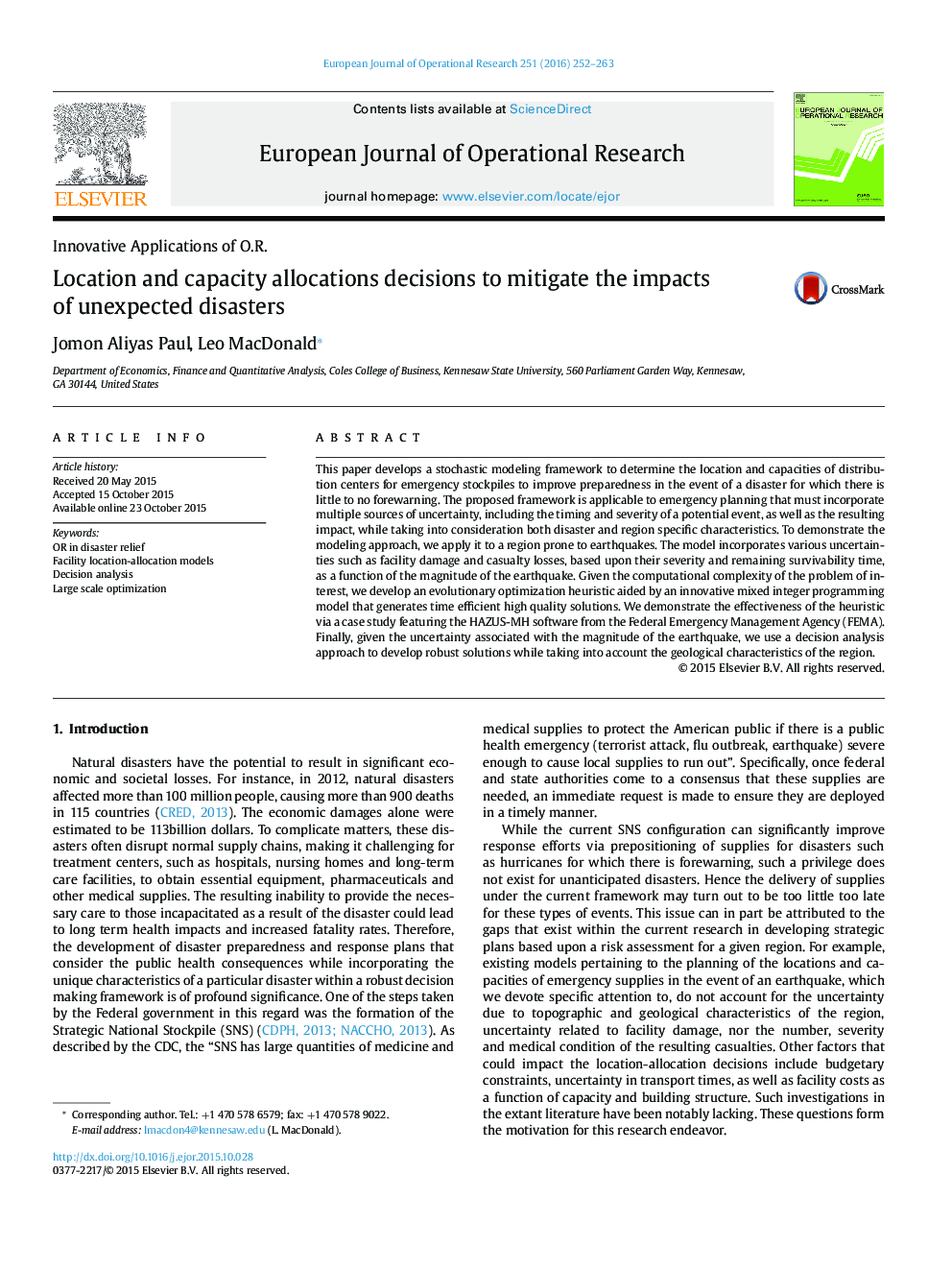| Article ID | Journal | Published Year | Pages | File Type |
|---|---|---|---|---|
| 480645 | European Journal of Operational Research | 2016 | 12 Pages |
•Develop a modeling framework for improved preparedness of unexpected disasters.•Setup a stochastic location/allocation optimization model to minimize total losses.•Create a heuristic that yields time-efficient solutions for large-scale problems.•Generate robust solutions given region-specific characteristics via decision analysis.•Demonstrate approach via a case study of the Northridge, CA region.
This paper develops a stochastic modeling framework to determine the location and capacities of distribution centers for emergency stockpiles to improve preparedness in the event of a disaster for which there is little to no forewarning. The proposed framework is applicable to emergency planning that must incorporate multiple sources of uncertainty, including the timing and severity of a potential event, as well as the resulting impact, while taking into consideration both disaster and region specific characteristics. To demonstrate the modeling approach, we apply it to a region prone to earthquakes. The model incorporates various uncertainties such as facility damage and casualty losses, based upon their severity and remaining survivability time, as a function of the magnitude of the earthquake. Given the computational complexity of the problem of interest, we develop an evolutionary optimization heuristic aided by an innovative mixed integer programming model that generates time efficient high quality solutions. We demonstrate the effectiveness of the heuristic via a case study featuring the HAZUS-MH software from the Federal Emergency Management Agency (FEMA). Finally, given the uncertainty associated with the magnitude of the earthquake, we use a decision analysis approach to develop robust solutions while taking into account the geological characteristics of the region.
